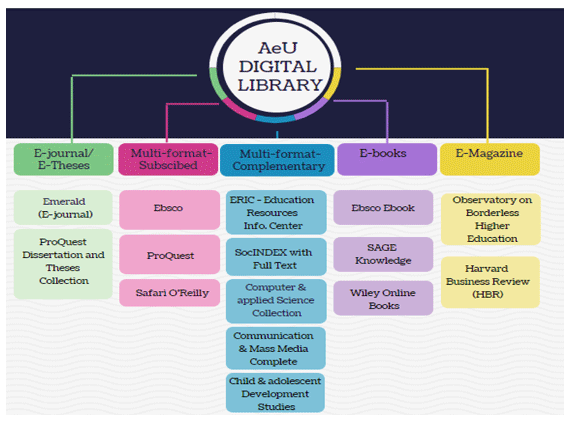
Search points
There are two search points that the users can retrieve our resources
EBSCO Discovery Service is a customizable discovery layer that provides libraries with the flexibility to bring together their collections into a single search platform.
Search All (Discovery Service -EDS)
Discovery Service is a customizable discovery layer that provides libraries with the flexibility to bring together their collections into a single search platform.
Users can search across databases and our OPAC by using this search point. Refer guides here: Recorded Webinar streaming only Presentation slides download
Past Exam Question
AeU Examination papers: users can search via this link link guide a available at guide
ProQuest Database
ProQuest database where users can retrieve from this point and and guide
AeU Repository
AeU Repository (collection of theses, project papers and University publications) users can explore from this link guide is available at guide
Search tips
Use AND to narrow a search and retrieve records containing all of the words it separates, e.g. adolescents AND children will only find records containing both these words.
Use OR to broaden a search and retrieve records containing any of the words it separates, e.g.adolescents OR children will find records containing adolescents only, children only, or both words.
Use NOT to narrow a search and retrieve records that do not contain the term following it, e.g. adolescents NOT children will find records that contain adolescents, but will not contain the word children.
Subject-specific/ Format-specific databases
If users have specific database to search or preference, the list of database(s) searchable through this link and for open access database
